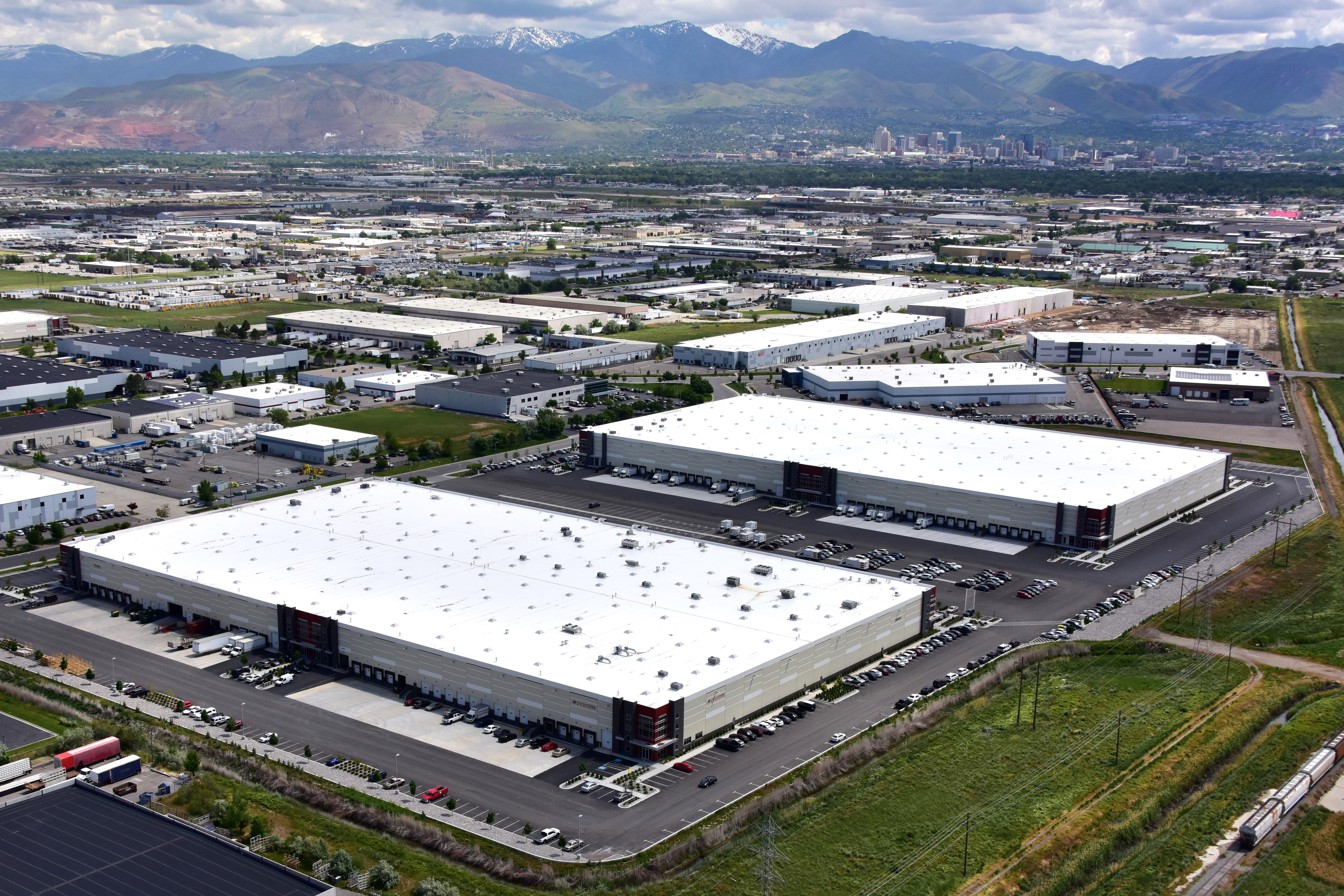Dominion Energy Wexpro and the Natural Gas Market Hedge

December 16, 2022
As we roll into winter, the cost of heating our homes and businesses gains attention. We spoke to Brady Rasmussen, vice president and general manager of Dominion Energy Wexpro, to learn more about the Utah natural gas market. Dominion Energy is a long-time EDCUtah investor.
Wexpro is a drilling and production company with land assets in Wyoming, Utah, and Colorado. The company has 836 company-operated wells and partners on another 623 non-operated wells in the region. Dominion Energy customers receive production from Wexpro’s wells on a cost-of-service basis, with most of the production coming from Wyoming wells and heading to Utah. Wexpro-produced gas accounts for about 50 percent of customer needs, while the other 50 percent is bought on the open market.
What are the origins of Wexpro?
We’re probably one of a kind, an exploration and production company that’s also regulated, earning a regulated return. Wexpro’s business is governed by an agreement with the State of Utah dating from 1981. It’s useful to share some history prior to that date.
In 1922, our predecessor company made a huge natural gas discovery in Wyoming, but there was nowhere for that gas to go. That’s what prompted the creation of a pipeline division. In 1929, our predecessors built a pipeline to bring that gas to the Salt Lake market.
Right from the beginning, the company was treated as a utility. If the company spent $100,000 drilling a well, that $100,000 would go into a rate base and the company could make an allowed rate of return. The distribution system from Wyoming to Utah was also created on a cost-of-service basis.
In 1972, there was a huge oil discovery in the service area. That prompted an argument as to who owned the oil – the shareholders or the customers. It took until 1981 for the courts to resolve the question. That resolution was the Wexpro Agreement – Wexpro’s name was derived from “Western Exploration and Production.” The Wexpro Agreement split oil profits at 46 percent for the shareholders and 54 percent for the customers. That 54 percent in essence went to reduce customers’ gas bills. The agreement also addressed any natural gas production coming online after 1981, which was dedicated 100% for customers’ benefit.
In 2012, we determined that we could begin to lose production from the fields existing at that time, which led to the Wexpro II Agreement. That agreement gave us a mechanism to acquire new leases. We pursue those lease acquisitions and partnerships with a lot of discipline to make sure it makes sense for customers.
What are the benefits of Wexpro for Utah-based businesses?
We call it a hedge. In general, the gas we provide through Wexpro does not experience a lot of price volatility, which Utah companies appreciate. Once any lease acquisition or drilled well is approved into the agreement, that investment is set, meaning as gas prices on the open market increase or decrease, the cost of Wexpro gas does not move around very much.
There are costs that fluctuate with the market, specifically royalties and production taxes. When the open market price goes up a dollar, our costs go up about 20 cents. In 2022, we’ve seen open market prices of $6.73 a dekatherm, while Wexpro is delivering gas at $4.15 a dekatherm. That translates to nearly $150 million of savings for our customers in the last twelve-month tracking period. If the current natural gas market prices remain high, customers stand to benefit nearly $300 million over the next five years from the cost-of-service production.
For example, we have done four major acquisitions under Wexpro II. The fourth and latest is the Alkali Gulch Field in Wyoming. We finalized that acquisition a day before Putin invaded Ukraine. We brought production from that field online at about $3.50 per dekatherm in terms of cost of service. With open market prices being about $3.00 higher, we’re paying an additional 60 cents of taxes and royalties in addition to the other expenses that go into cost-of-service calculation. So customers are currently paying about $4.10 for Wexpro Alkali gas versus more than $6.50 for open-market gas. That’s a good deal for our customers.
Alkali Gulch is just one example. Because any unsuccessful drilling is on our dime, not the customer’s, we’re encouraged to be very competitive and selective when it comes to bringing new gas and oil sources online. We brought some wells online in 2017 at around $2.00 per dekatherm cost-of-service, and they are still producing, keeping rates lower for our customers.
What message do you have for site selection consultants and companies looking at the Utah market for corporate expansion?
Natural gas is part of their cost of doing business. The Utah market gives them some very stable and predictable gas prices going forward, no matter what the overall energy market does.
Take Storm Uri, the severe weather event in Texas in February 2021. Prices skyrocketed to $1,000 per dekatherm in Texas and back east, and it affected prices here too, pushing our open-market prices to the $17 to $18 range. In those seven days alone, the Wexpro Agreement saved our customers $171 million vs. the gas purchased on the open market.
There were utility companies around the country that had to pass hundreds and hundreds of millions of dollars of expenses to their customers because of Storm Uri. We were able to protect our customers from much of that volatility. I would say that’s a very big benefit for anyone considering Utah.
How does Wexpro fit into Dominion’s sustainability strategy?
Our wells are out in the middle of nowhere. There are no power lines to the drill sites. For our 836 operated wells, we run controllers and devices by pneumatic pumps, running off methane. Methane is vented via this approach, so about ten years ago, we started installing low-bleed pumps to reduce that venting.
We’re starting to switch out the pneumatic pumps with electronic controllers that are powered by solar panels onsite. This approach eliminates methane emissions related to running controllers and devices. We’ll be done with that project by next year, or if supply-chain issues persist, 2024 at the latest, and that effort will reduce Dominion’s overall emissions by 16 percent. I’m happy to say that this puts us ahead of regulations coming in the future.
Lastly, there’s a benefit to the customer in that the methane that would have been vented now gets captured and provided to customers in the form of natural gas.
What challenges does Wexpro currently face?
Drilling rigs are difficult to secure when energy prices are high and demand for rigs is strong. High energy prices make it important to retain personnel. And it’s a challenge to secure drilling permits on federal lands where Wexpro operates in the current political environment.
Anything else you’d like to highlight?
The Wexpro Agreement has many good checks and balances that benefit customers. We drilled about 20 wells out in southwestern Wyoming this year. We weren’t allowed to start drilling until we could demonstrate to the regulators that the gas coming from those new sites would beat the natural gas market prices over the next five years. The agreement really prevents us from doing uneconomical drilling and encourages us to do our science to ensure customers get a good price.






